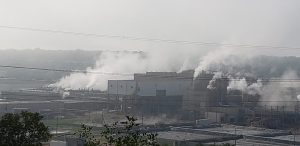It’s no surprise that South Dakota’s new men’s state prison will apparently be built in Sioux Falls, the state’s urban center. The facility is expected to be significantly larger than the existing one, housing far more inmates, and bringing with it increased challenges for the host community.
But the recommendation by a state task force to put it within Sioux Falls city limits may be the product of a flawed selection process and a lack of coordinated and assertive leadership from local officials. And it raises an uncomfortable question: Why does South Dakota’s largest and most dynamic city seem so powerless in state-level decisions that affect its future?
Path of Least Resistance
The state’s Prison Task Force reviewed many potential sites, and several communities even offered land, until NIMBY sentiment set in. Those offers were quickly withdrawn.
Rather than make a strategic, long-term decision, the task force chose the path of least resistance. Their decision seemed based on finding the location with the lowest public pushback. That approach sidestepped political risk but it failed to address long-term community impact, fairness, and the state’s shared responsibility. It’s hard to believe better sites aren’t available.
Sioux Falls Leadership: Too Passive
Equally concerning is the passivity of Sioux Falls’ leadership. Locating the prison somewhere in the metro might make logistical sense but putting it inside city limits should not be an option. Why didn’t local officials and community leaders push back harder or negotiate support to offset the impact?

South Dakota Mens’ Penitentiary in Sioux Falls
Prisons bring more than inmates. Families relocate nearby, and many former prisoners stay nearby after release. Those realities create lasting costs for housing, law enforcement, and schools. Without strong state support, Sioux Falls will carry those burdens alone.
A Familiar Pattern of Neglect
This isn’t the first time Sioux Falls has found itself on the losing end of state decision-making. Despite being South Dakota’s economic engine and population hub, the city has long struggled to get what it needs from the legislature.
Hotel taxes are capped well below those in peer cities like Lincoln, Nebraska and Rochester, Minnesota. That hamstrings our ability to invest in tourism infrastructure. We’re also prohibited from using local sales taxes to fund major projects, a tool available in other states.
And instead of a thoughtful, long-term approach to tax policy, the state adopts band-aid measures like the recent property tax cap. It may play well in Pierre, but it disproportionately hurts the growth areas in the state.
Meanwhile, Sioux Falls area legislators often vote in ways that are not in the best interest of our community. About a fourth of the legislature, a formidable bloc, represents districts in our area. We need community leadership which will work with and better coordinate them.
We Need a Better Vision
Sioux Falls was once known for its bold, collaborative leadership. Business, civic, and elected leaders worked together with a shared vision, driving downtown revitalization, smart growth, and a can-do reputation that set the city apart.

Sioux Falls Mayors Past and Present
But today, that spirit feels diminished. Our community’s elected and business leaders seem more reactive than proactive. Long-term planning has taken a backseat to short-term crisis management.
The leaders who helped attract and enable major employers in finance and health care didn’t envision a future that included not just a bigger prison but a second major slaughterhouse. Those aren’t the kinds of industries we aspired to bring here.

Slaughterhouse in Sioux Falls
I sometimes wonder if the Chamber of Commerce and development foundation focus a bit too much on growth and not enough on life quality and the right sort of growth.
We Need Proactive Leadership
Now more than ever, Sioux Falls needs strong, coordinated leadership to shape its future. That starts with a clear agenda in Pierre with collaboration among city, school, county, business and legislative leaders. While leading such an effort is not in the mayor’s formal job description, who is better positioned to do it? It’s a role the greater Sioux Falls area desperately needs filled. It is certainly something we should keep in mind as we listen to sales pitches from those who would be our next mayor.
Whether it makes sense or not, a larger state prison appears headed to Sioux Falls. But how we respond and what we learn from the process will shape whether we continue to thrive or simply absorb the fallout from decisions made elsewhere. Our future depends on whether we reclaim the bold, forward-looking mindset that once defined us.
How about a deep dive into farmland property taxes. An acre of farmland in Lincoln County is roughly $25/acre/yr. That same acre in Sioux Falls is $26000. We have over 40 million acres of ag land, let’s raise taxes just $5/acre/yr. The extra $20,000,000/yr will offset the many increases we experience in the city.
Or assess Commercial property at 100% instead of 60%. That would raise millions just in the 1st year of collection. But I would agree, ag land has it made. I pay the same in SF for a 900 sq ft house in property taxes that my parents paid in the 90’s on 80 acres of farmland.